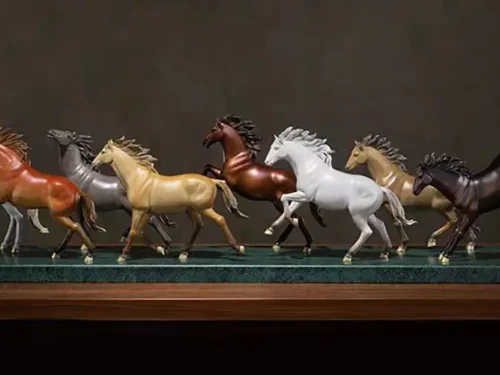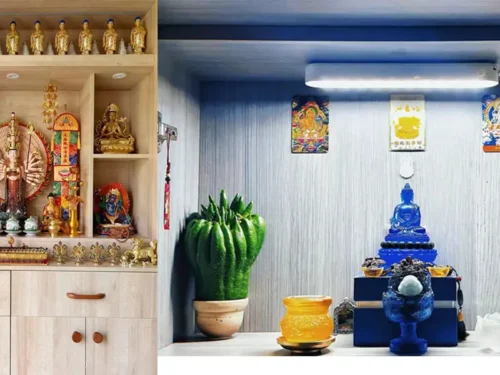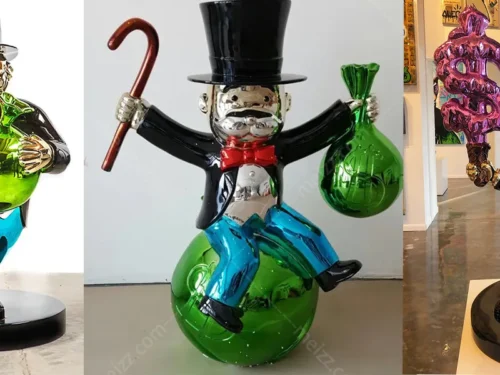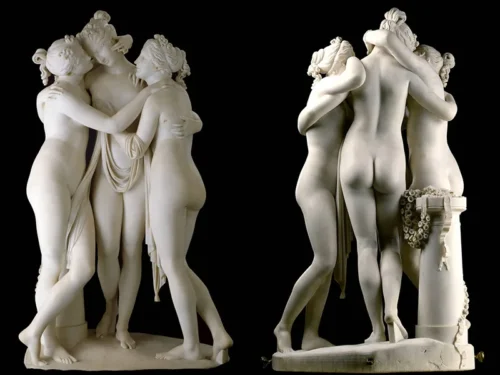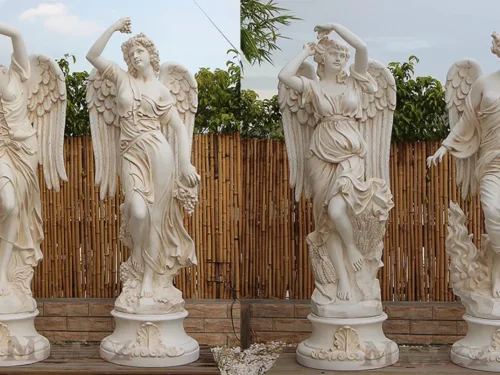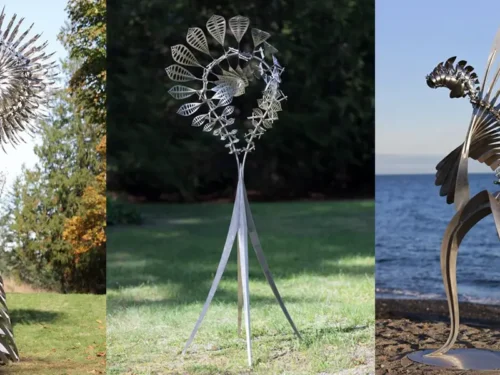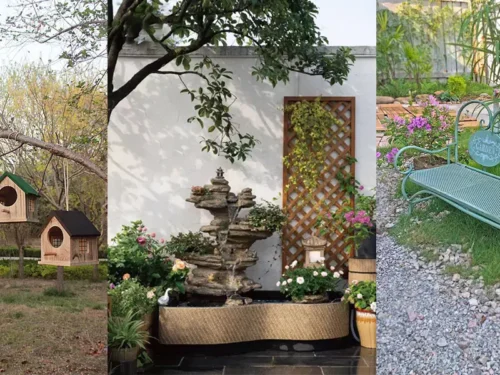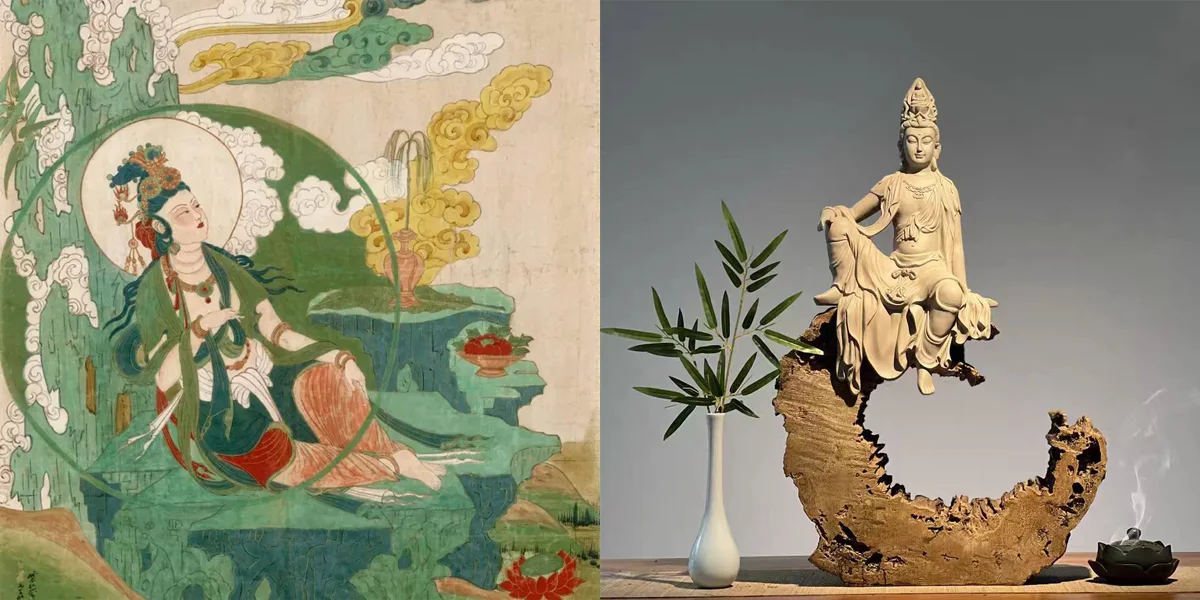
Table of contents
Today we will learn more about water and moon guanyin. As one of the most important spokespersons of Buddhism in China, Avalokitesvara Bodhisattva possesses boundless wisdom and divine powers, saving lives in the world of Samantabhadra. In various folk legends, Guanyin’s elegant posture and gentle words embody the beliefs and hopes of countless people.
The Guanyin in our impression is mostly dressed in white, sitting steadily on the lotus platform, holding a clean bottle. Solemn and dignified, unlike ordinary people. However, not all Guanyin statues maintain a serious posture. When Guanyin changed her traditional dignified posture, she presented a carefree and comfortable appearance. Not only did it not detract from her demeanor, but it also added a touch of secular human touch to her. The Guanyin who appears in this image before us is called water and moon guanyin.
Image of Shuiyue Guanyin
Water and moon guanyin, also known as “Water Auspicious Guanyin” or “Water Auspicious Bodhisattva”, is one of the most common 33 Guanyin statues in later generations. However, the name “Shui Yue” does not originate from early Buddhist scriptures, but rather from the fusion of Buddhism with local Chinese culture after its transmission to China.
Water and moon guanyin is the embodiment of Guanyin’s wholehearted observation of water, with various forms. One is standing on a lotus petal, which floats on the sea surface, while Guanyin is observing the moon in the water; Another way is to sit in a lotus sitting posture, sitting cross legged on a rocky mountain in the sea, holding an unfurled lotus in the right hand, and applying a fearless seal in the left hand, with water flowing out of the palm. In addition, there are various types of postures, such as sitting posture and having three sides and six arms.
The reason why this statue is named water and moon guanyin varies depending on the interpretation. Some say it is named water and moon guanyin because its image depicts the appearance of a moon in the water, while others say it is named because its image floats on the sea like a moon in the water.
The image of water and moon guanyin has been discovered in the Thousand Buddha Cave in Dunhuang. The Louvre Museum of Art in France has one of the oldest pieces in its collection, which is said to have been created in the mid Tang Dynasty.
The Origin of Shuiyue Guanyin
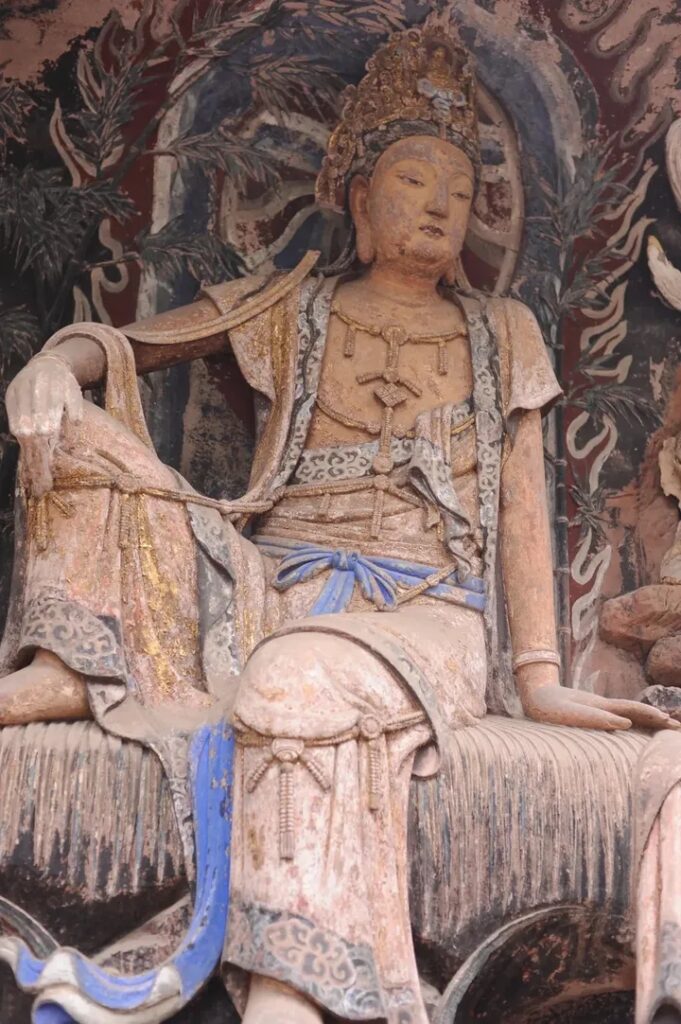
There are two theories about the origin of Shuiyue Guanyin.
The currently recognized conclusion in academia is related to the mid Tang painter Zhou Fang. In the abstract of “Records of Famous Paintings of All Dynasties”, Zhang Yanyuan mentioned that Zhou Fang (740-800 AD) painted a water moon Guanyin painting at Shengguang Temple in Chang’an, and he was the first person to do so. This painting depicts a full moon surrounding Guanyin, surrounded by a bamboo forest.
According to Xuanzang’s “Records of the Western Regions of the Great Tang Dynasty”, Zhou Fang created the body of the water and moon in the Bodhisattva Guanzi in Bujialuojia Mountain, which quickly spread throughout the country and became one of the thirty-three Guanyin in later generations. The statue of Shuiyue Guanyin appeared in temple murals throughout the Tang and Five Dynasties periods. Since the Song Dynasty, the influence of Water Moon Guanyin has gradually expanded, becoming one of the most widely portrayed Guanyin images in later generations.
Another legend occurred during the Song Dynasty in China. According to legend, one day, Guanyin Bodhisattva arrived at Gusu City and witnessed hundreds of thousands of people suffering under the slaughter of the Jin army. Touched by this tragedy, Guanyin Bodhisattva decided to use the power of compassion to rescue sentient beings. She transformed into a beautiful woman and built a platform in the city of Gusu, silently reciting scriptures and casting spells to rescue those unjust souls.
After a long period of recitation and prayer, the compassionate power of Guanyin Bodhisattva gradually emerged. Someone realized after the end of their menstrual cycle that this beautiful woman was the incarnation of Guanyin Bodhisattva. They requested to see the true body of Guanyin Bodhisattva, hoping to receive her guidance and blessings. The Bodhisattva pointed to the riverbank, and only then did the crowd notice a bright moon shadow reflected in the water, while the Bodhisattva’s treasure was hidden within this moon shadow.
Among the crowd, there was an artist named Qiu Zijing who was skilled in painting. He painted the image of Guanyin Bodhisattva appearing in the moonlight in the water and spread it. This portrait has been praised by the world and is known as the “Water Moon Guanyin”, becoming the object of faith and prayer in people’s hearts.
The Evolution of Shuiyue Guanyin
At present, the earliest chronological statue of Water Moon Guanyin in China belongs to the Shengshui Temple in Weicheng, Mianyang. It was donated by a believer named Wang Zongjian in the fifth year of Tang Zhonghe (885 AD).
This Guanyin Statue is wearing a high crown, with its head tilted to the right, hands wrapped around its left leg, and a circular body light behind it. It sits on a diamond throne made of rocks. The inscription above reads: “Respectfully create the body of Guanyin Bodhisattva water moon, along with Subhuti. Disciple Wang Zongjian respectfully creates it.”.
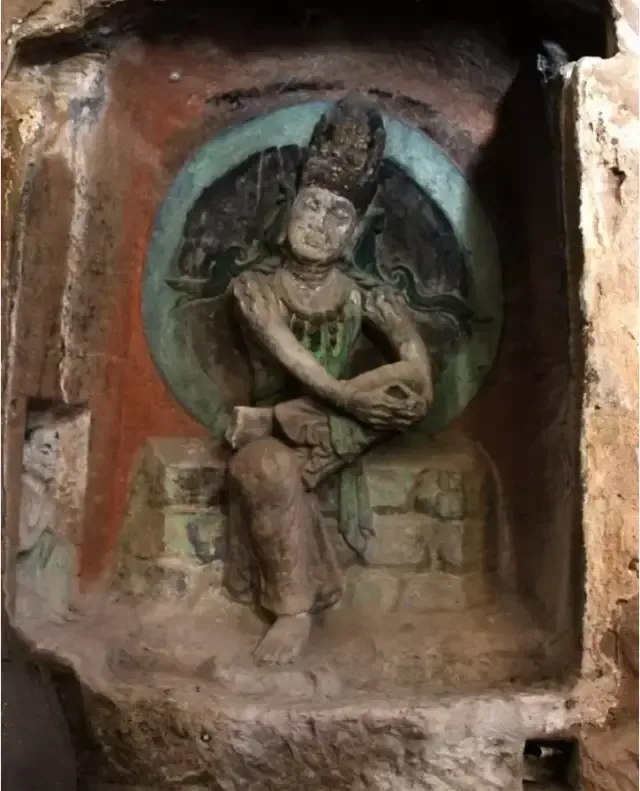
Nowadays, most of the Guanyin we see are gentle and elegant female images. However, if we trace back to the origin, in the ancient Indian Buddhism where Buddhism originated, Guanyin was actually portrayed as a man. This can be seen in the water and moon guanyin statues during the Tang Dynasty.
The water and moon Guanyin seen during the Tang Dynasty, even though her face often had the typical round beauty of Eastern women, still had a beard symbolizing men.
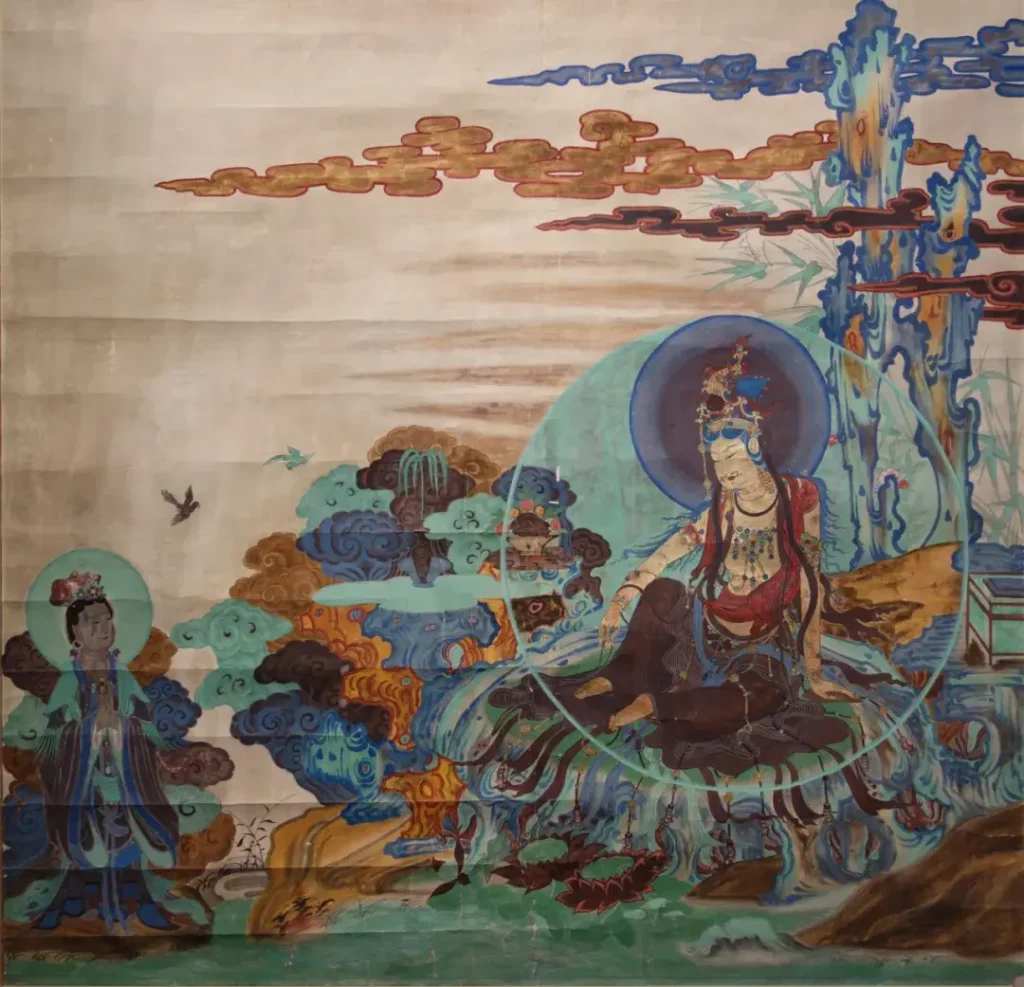
During the chaotic times of the Five Dynasties and Ten Kingdoms, Buddhist culture continued to flourish. People who suffered from war persecution inherited the Tang Dynasty folk belief in Water Moon Guanyin, and even became more dependent on it.
On the one hand, they inherited the key points from the previous Water Moon Guanyin statue, and on the other hand, they increased their innovation efforts, making the SWater Moon Guanyin of this period present diverse characteristics such as a large number, rich patterns, and wide spread regions.
During the Song Dynasty, there was an increase in the number of people worshipping Water Moon Guanyin, and the secularization and localization of Water Moon Guanyin statues became more evident. At the same time, the female characteristics of the Guanyin statue are prominent, with a smiling and serene expression, and a graceful and generous posture.
The scope of influence has also broken geographical restrictions, and as far as Japan and South Korea, there is a belief in water moon Guanyin.
During the Yuan Dynasty and beyond, Shuiyue Guanyin had completely lost her masculine feeling. Although the background elements are still full moon, lake water, willow net bottle, and waterfall, Guanyin itself has undergone new changes. Dressed in a long robe and sitting elegantly, exuding a detached and dignified demeanor.
Liao Dynasty Wooden Carved Water and Moon Guanyin Statue
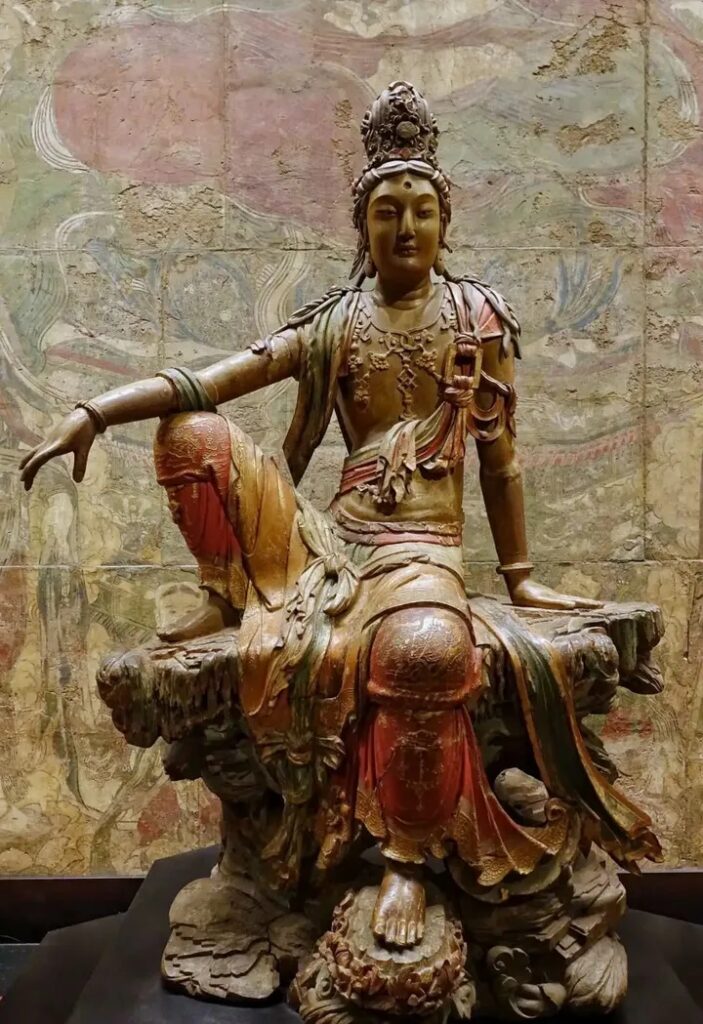
Water and Moon guanyin not only has its statue in China, but also “travels across the ocean” to showcase its charm in different places.
The Liao Dynasty woodcarving of the Water Moon Avalokitesvara statue, currently preserved at the Nelson Atkinson Museum in the United States, is praised as “the most magnificent statue in China that still exists.”.
The Buddhist statues of the Liao Dynasty exhibited a characteristic of interweaving diverse cultures. On the one hand, it is because it inherited the elegant and dignified style of Tang Dynasty statues and the realistic techniques of Southern Song Dynasty statues. At the same time, because Liao was a political power controlled by ethnic minorities, it had its own unique aesthetic taste and expressive techniques.
This wooden sculpture of Water Moon Guanyin stands 2.41 meters tall and is one of the largest surviving wooden sculptures from the Song and Jin dynasties. The biggest feature is the female face and the male upper body.
Its full body, slender upper body, and masculine majesty, while on its round face, its hazy eyes lightly close and gaze down, showcasing elegant and wise feminine beauty. It is the witness of the era when Guanyin transformed from male to female.
The most noteworthy feature is the facial contour, which has a Greek sculptural style and conforms to the Golden Ratio theorem.
Although she is now peacefully placed in the display cabinet, when she first appeared in front of Americans, she was separated and placed on the wasteland in the backyard of Chinese antique dealers.
Antique dealer Lu Qinzhai purchased and pieced it together. Later, it was determined by experts that her long hidden true identity was finally revealed, to the extent that the Nelson Atkinson Museum in the United States was willing to pay a large sum of money to buy it and become a treasure of the museum. Otherwise, this artwork that combines religion and beauty may become a major regret for the world’s Buddhist artifacts due to its lack of attention.

